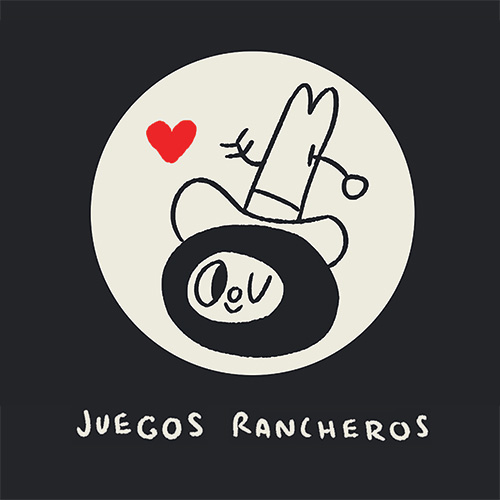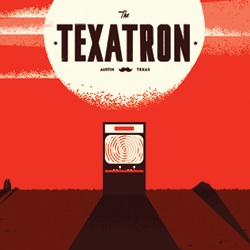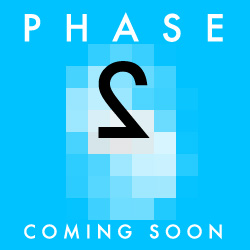ONE MORE GO: SAMBA DE AMIGO, OR WHY SEGA OWE ME £400
It’s 2008. You’re an experienced game maker waiting to pitch your big new idea to your boss. ‘Well?’ he asks. ‘It’s a motion controlled music party game with novelty peripherals that will retail for around £100!’ you blurt. A smile. ‘Perfect!’ says your boss. ‘Get my secretary to give you $10 million on your way out.’
It’s 1998. You’re an experienced game maker waiting to pitch your big new idea to your boss. ‘Well?’ he asks? ‘It’s a motion controlled music party game with novelty peripherals which will retail for around £100!’ you blurt. A frown. ‘What,’ he asks, ‘is a music game? And what’s a party game? And what’s motion control? And who pays £100 for a videogame? What kind of lunatic are you?’ At which point you remind him you’re the Yuji Naka kind of lunatic and the secretary gives you $5 million on the way out anyway (adjusted for inflation).
Samba de Amigo is the most prescient project in videogame history. We’re so used, now, to the way that Guitar Hero and Wii Fit rule the game charts, that we forget how far we’ve come, and how crazy those initial pioneers must have seemed. But in 1998, when Samba went into development, it was out on its own.
Parappa had been around for a few years, but Guitar Freaks and Taiko Drum Master were yet to debut. Mario Party and Bishi Bashi Special came out just a whisker before it, and long after it must have gone into development. The only peripherals in town were light guns and steering wheels.
Samba De Amigo was a genuine quantum leap. There was so much in the implementation to give it credit for – the exuberance of the visual style, itself a radical rejection of the browns and greys dominating early 3D gaming; the crisp groove of the move sets; the ludicrous playlist – that it’s been easily to overlook the brilliance of the very idea.
It’s 2009. I approach my Wii with a hesitance I normally reserve for roadkill. I put the disk in the drive with the same doomed hope that makes you send a Christmas invite to a supposedly sober drunken uncle. The screen explodes into a riot of carnival colours. My heart feels like it’s made of eggshell. And then, a few minutes later, my heart feels like it’s made of shattered eggshell. Goddam it, Sega.
Samba has always been broken. It’s spent a decade breaking me. I’ve never had a pair of maracas that weren’t dicky. I’ve spent hundreds on eBay, over the years. I’ve bought replacement originals, brand new knock-offs. I’ve knelt, sick with guilt, in front of the torn box of a borrowed pristine import set. And now, the new Wii game is broken too. At least on the Dreamcast, in those brief working windows, the maracas were pin sharp. It’s clear the Wii remotes will never be anything but flabby and unreliable. I played for five minutes and stopped.
But for five minutes, I played, as I have so often before. I’ve spent more on Samba than on any other game in my life, I think. Including Warcraft and that crazy afternoon when I nearly bought Tekki. I guess Rock Band will eclipse it in time, but for now – and for the last ten years – something always brings me back to Samba, whatever the cost.
It’s partly the music, of course, which shares that narcotic elation which only Sega tunes, from Space Channel 5 to Outrun, can deliver. It’s partly the visuals: the magnificent grumpiness of the cowboy cheetah brothers, the deranged enthusiasm of the teddy-bear-suit-wearing-teddy-bears, Bingo and Bongo. It’s partly that the game taught me more about dancing than hours grinding out Dance Dance Revolution spins and twists.
Those are cop-outs, though. Truths, but cop-outs. The reality is that I come back to Samba de Amigo because it cheers when I do stuff right. People, when praising responsive, rewarding games, say things like ‘it does everything but throw you a ticker tape parade when you win!’. Samba throws you a ticker-tape parade when you hit a B rank. An actual ticker-tape parade. People – well, sort of people – cheer and clap and smile and dance.
There are lots of games that shower you in feel good factors when you accomplish things. Peggle, now resurgent on iPhone, probably holds the record. But there’s something fundamentally different about making things happy and making people happy. Jane McGonigal nailed it at her GDC talk (precised here) when she talked about how reciprocal happiness is.
If you make people happy they try to make you happy (perhaps by throwing a ticker-tape parade), which makes you happier and round and round it goes. As a design rule, it’s over-simplistic and shallow. It’s also wildly effective. If I come home from dance class and practice to a CD, it’s daunting and depressing. If I come home and practice to the soundtrack of a dance competition on YouTube, complete with whoops and cheers, I do twice as well. Regardless of that fact that I’ve never met the people who are cheering and that they’re cheering for someone else, two years and four thousand miles away.
This leaves me, though, with a dilemma. If you’ve never played Samba, should I be telling you to? Should I be telling you to take the plunge and dive into this game which is ready and waiting to trigger the finest feedback loop in the world? Should I be telling you to buy this game that loves you, but that will break you, probably just before you break it?
It’s painful, but because I only have your best interests at hearts, I’m going to tell you no. No, you shouldn’t play it. You mustn’t play it. You won’t play it. That way your heart will never be shattered, and the ticker-tape parade will never be snatched away from you. And that way you certainly won’t get a bid in on this before I do.
[Margaret Robertson is the former editor of Edge magazine and now videogame consultant. One More Go is her regular Offworld column in which she explores the attractions of the games she just can’t stop going back to.]
- One More Go: Intelligent Qube, or Murdering Steven Spielberg …
- One More Go: Passage, or why I really should know better – Offworld
- One More Go: God Hand, or why hardcore games ring my bell – Offworld
- One More Go: Wipeout, or The Single Best Games Console You Never …
- One More Go: Rittai Picross, or the One-Word Secret of Good Game …
- Offworld: One More Go Archives
See more posts about: Offworld Originals, One More Go






